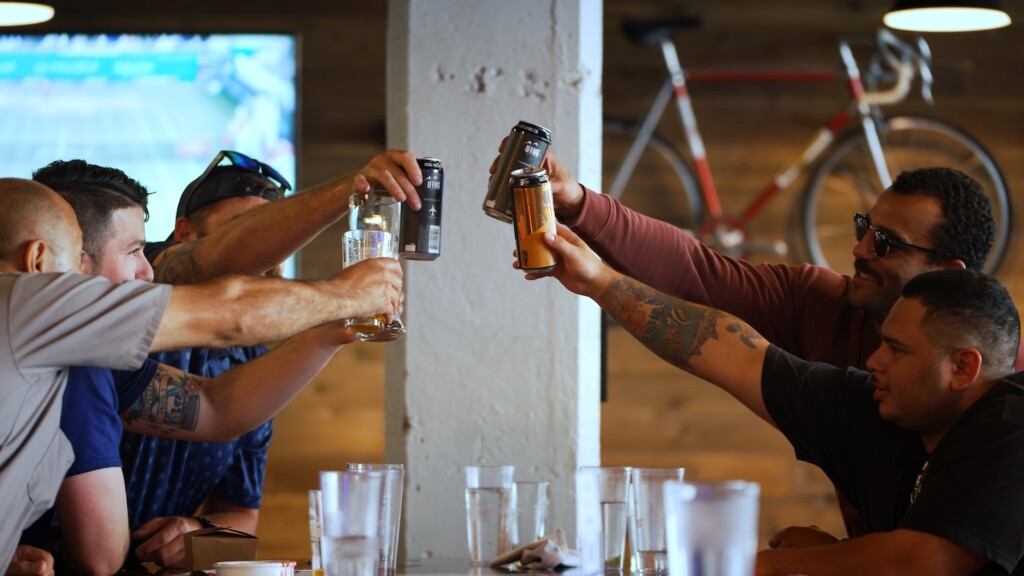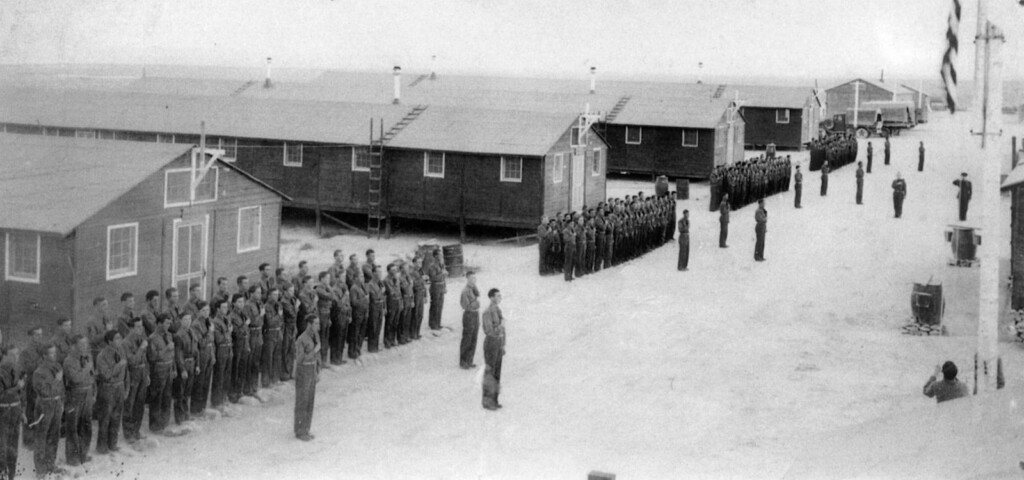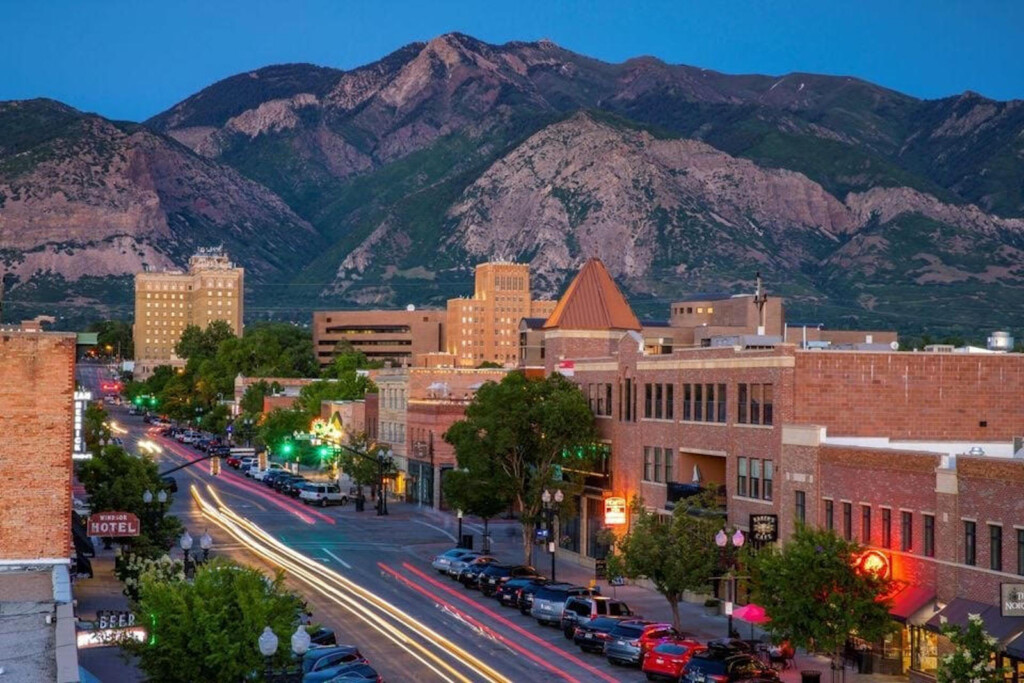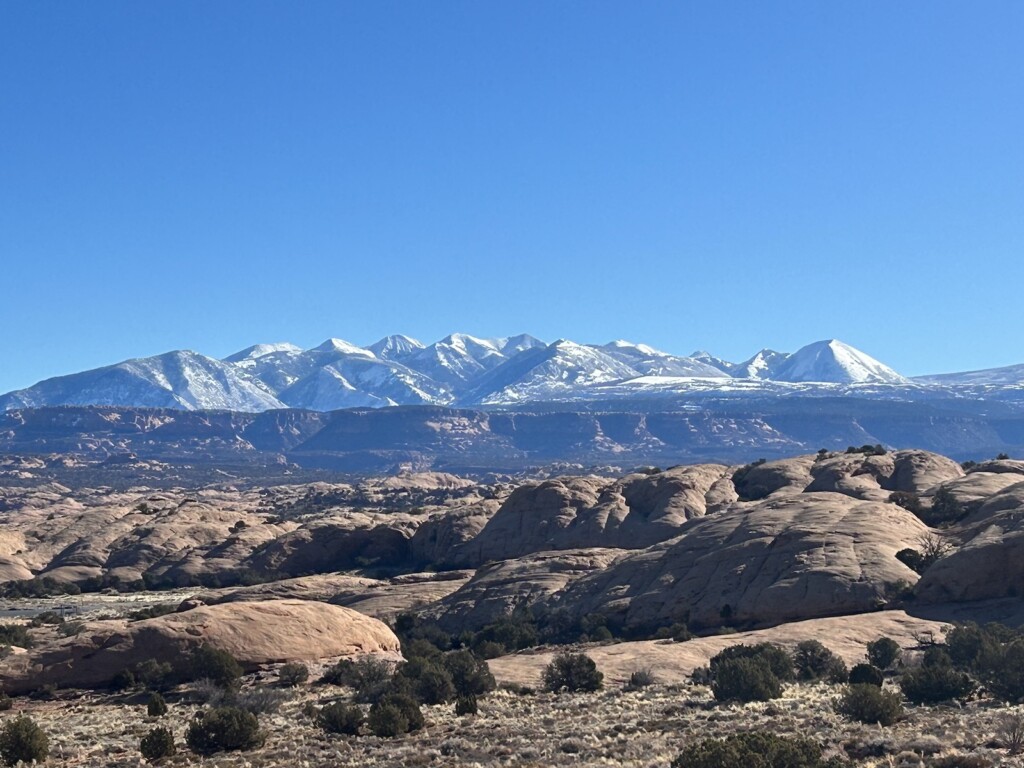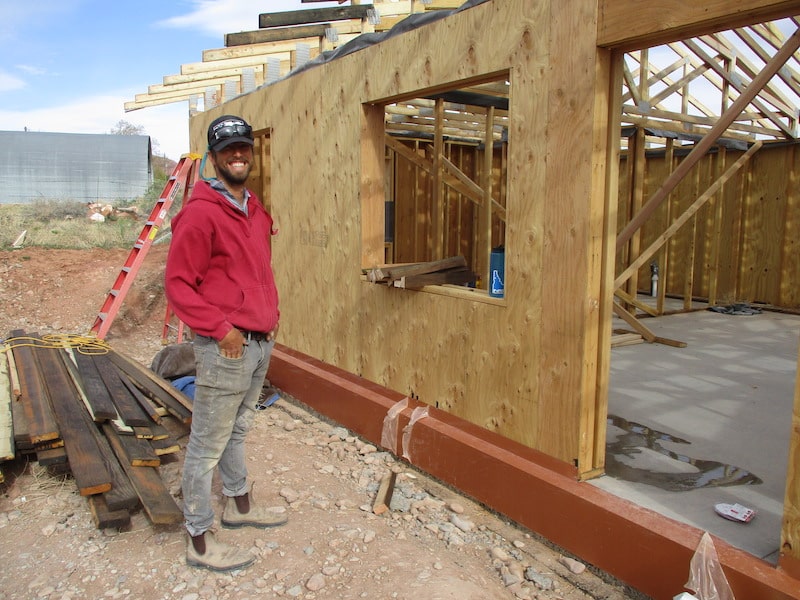
Some of the people are residents-to-be working on their own and their neighbors’ homes through sweat-equity programs offered by local housing nonprofits; some are volunteers, donating time and labor in exchange for building skills; some are professional subcontractors. They’re all working on homes built specifically for Grand County workers on a parcel owned by the nonprofit Moab Area Community Land Trust (MACLT).
The MACLT is just one entity attempting to address the housing crisis in Moab. Housing is a problem nationwide; Moab’s housing market is under additional pressure from a thriving tourism industry that generates a glut of low-paying jobs while simultaneously increasing the profitability of overnight accommodations, incentivizing developers to focus on that sector. Many local workers share housing, sometimes in tight quarters. Some live in dilapidated or substandard homes; some live in their vehicles. Others commute to work in Moab from the closest towns: La Sal and Monticello to the south or Green River to the north.
In Arroyo Crossing, the land is owned by the MACLT, and leased by residents who own the homes themselves. Taking the land out of the equation helps keep the costs low for buyers. To be eligible to purchase a home in the 42-acre subdivision, buyers must live and work in the county and earn between 80-120% of the area median income (AMI). There’s also an equity cap on the resale prices of the homes to help maintain affordability. Arroyo Crossing will eventually have about 300 units; a mix of single-family homes, townhomes, and apartments. MACLT Executive Director Kaitlin Myers said about 100 of them will be completed within the next couple of years.
“Most of our lots are already reserved or are in some level of development already,” she said. That’s not surprising, considering the desperate scramble for housing in the Moab area.
Local governments are working on housing too. In 2018, Grand County rolled out its “High Density Housing Overlay” to encourage the private sector to build workforce housing. The overlay allows property owners in certain areas to apply to develop their land at a higher density than their underlying zoning dictates, provided they agree to deed-restrict 80% of the units to Grand County workers. That restriction, officials hope, will tie the home prices to local wages.
Many HDHO units are currently in the pipeline, though developments have been delayed by permitting procedures, misunderstandings on the terms of the new policy, rising costs of construction materials, and a shortage of local construction professionals.
Moab City requires any new overnight accommodations developments to either provide some employee housing or pay into a fund to be used for that purpose. In 2018 the city used those funds to purchase a property called Walnut Lane with plans to replace existing run-down trailers with more, and higher-quality, affordable housing. That project has been stymied by unforeseen legal issues and higher-than-expected project costs, but city officials still hope to see it through in the near future.
At the same time local governments are trying to help ease the housing crisis, they’re grappling with concerns about overcrowded neighborhoods and abused public areas. Neighbors complain about the noise and congestion associated with “bunkhouses” where many employees of a business may live together.
Camping—including living in a vehicle—is illegal outside of established and permitted campgrounds in Moab City and Grand County. Free camping can be found on federal public lands outside those boundaries, but it can be a long drive to and from town, and popular dispersed camping spots are overused: managers find trampled vegetation, litter, and human waste in popular camp spots.
Some of these issues are associated with tourism. Congestion on a residential street might be due to an unlicensed overnight rental, and many users of free campsites are visitors. However, many are members of the local community and workforce who can’t find affordable, stable housing.
Some Moabites deliberately eschew traditional housing. Sean and Nick, both in their early 20s, work for a busy gear retailer in town, and they say they enjoy living out of their vehicles. Nick has lived out of his van for about two years. He likes to be mobile and close to the outdoors. He said he missed his van after spending a short time living in an apartment with a friend.
“I didn’t know what phase the moon was in the other day, and I kind of freaked out,” he said. He plans to stick with the van lifestyle for the foreseeable future.
Both the city and county have considered measures that would allow people to live in RVs or vehicles in town, at least temporarily, and possibly offer amenities like restrooms and a parking area. Asked if such an option would appeal to him, Nick said he prefers to drive back and forth between work and dispersed camping areas outside of town so he can enjoy wilderness and solitude. He tries to avoid the crowds at the most popular camp spots.
In Moab, tourism and the housing crisis are inextricable. Moab’s funky-desert-town vibe and outdoor splendor attract both more tourists and residents seeking an alternative lifestyle. Businesses struggle to find employees, while employees struggle to find housing. Residents and tourists rely on each other to fuel the economy, but at the same time vie for space both under roofs and under the stars.
RELATED CONTENT
Moab Growth Limited by Building Cost and Water Supply
Moab Housing: Luxury in Abundance but Scarcity of Affordable Housing
The Reality of Van Life in Moab, Utah
Flying for the First Time over Some of the Most Spectacular Scenery on Earth, Moab Utah
Easy Bee Farm: Growing Food on Easy Street in Moab Utah
Subscribe to Utah Stories weekly newsletter and get our stories directly to your inbox


